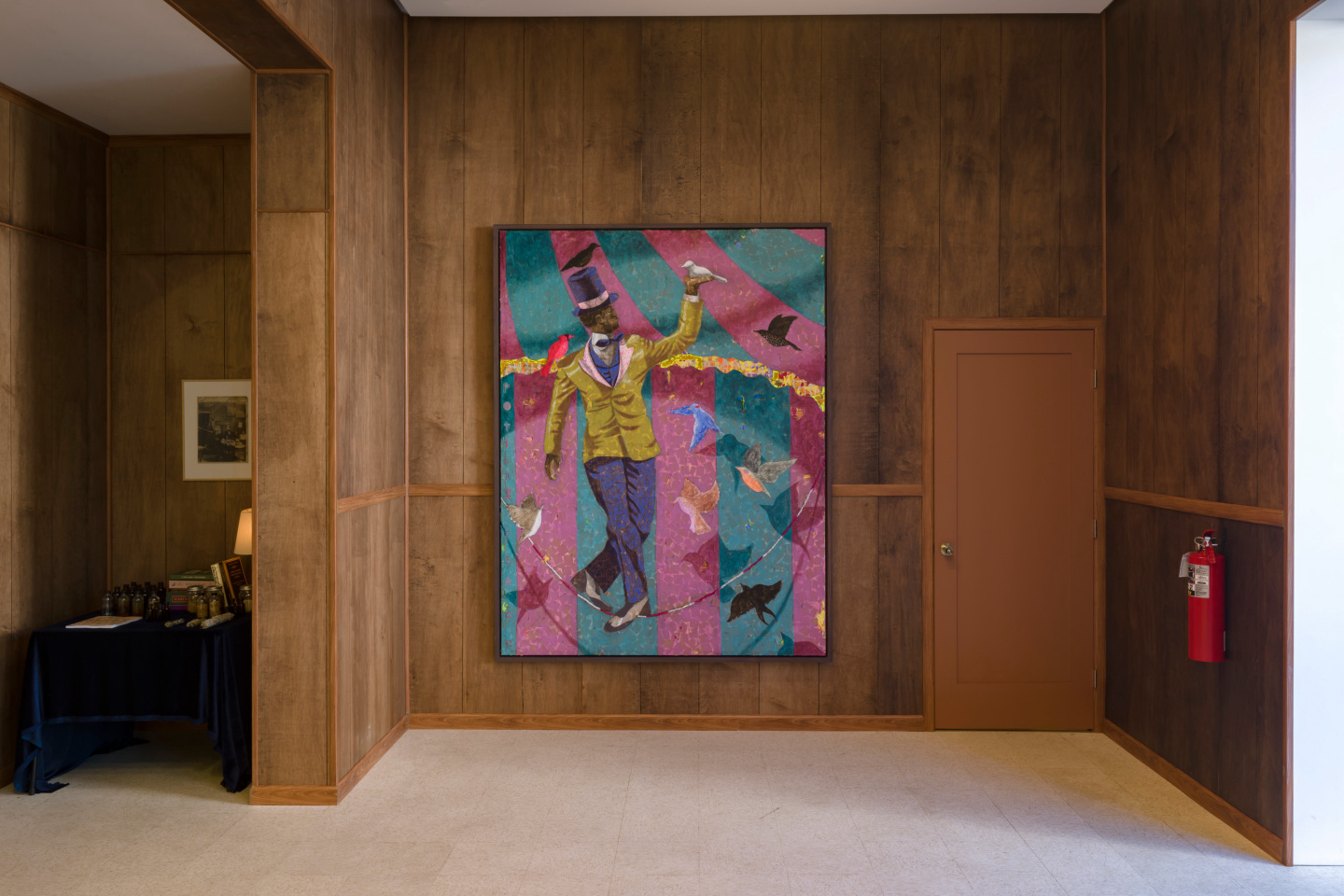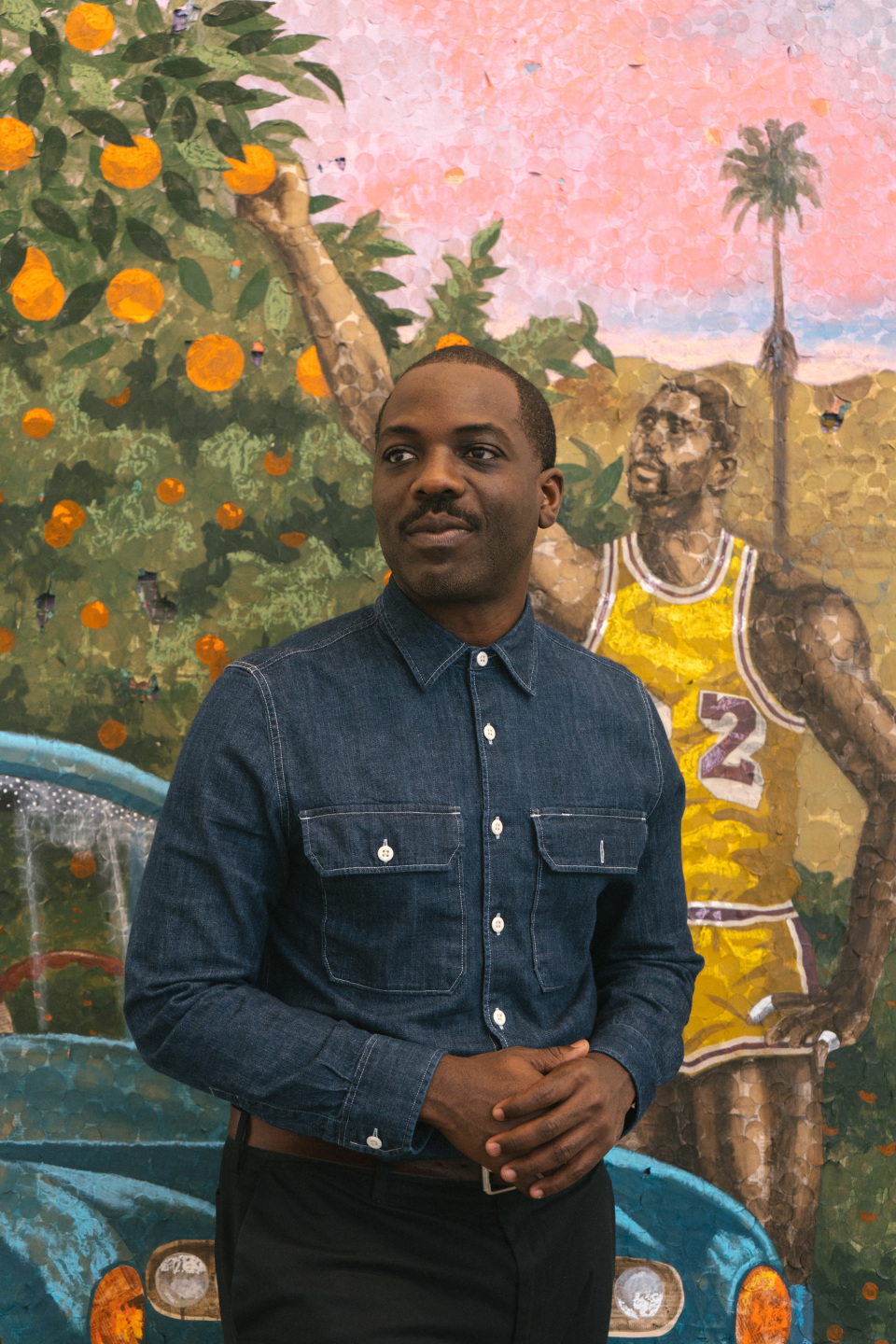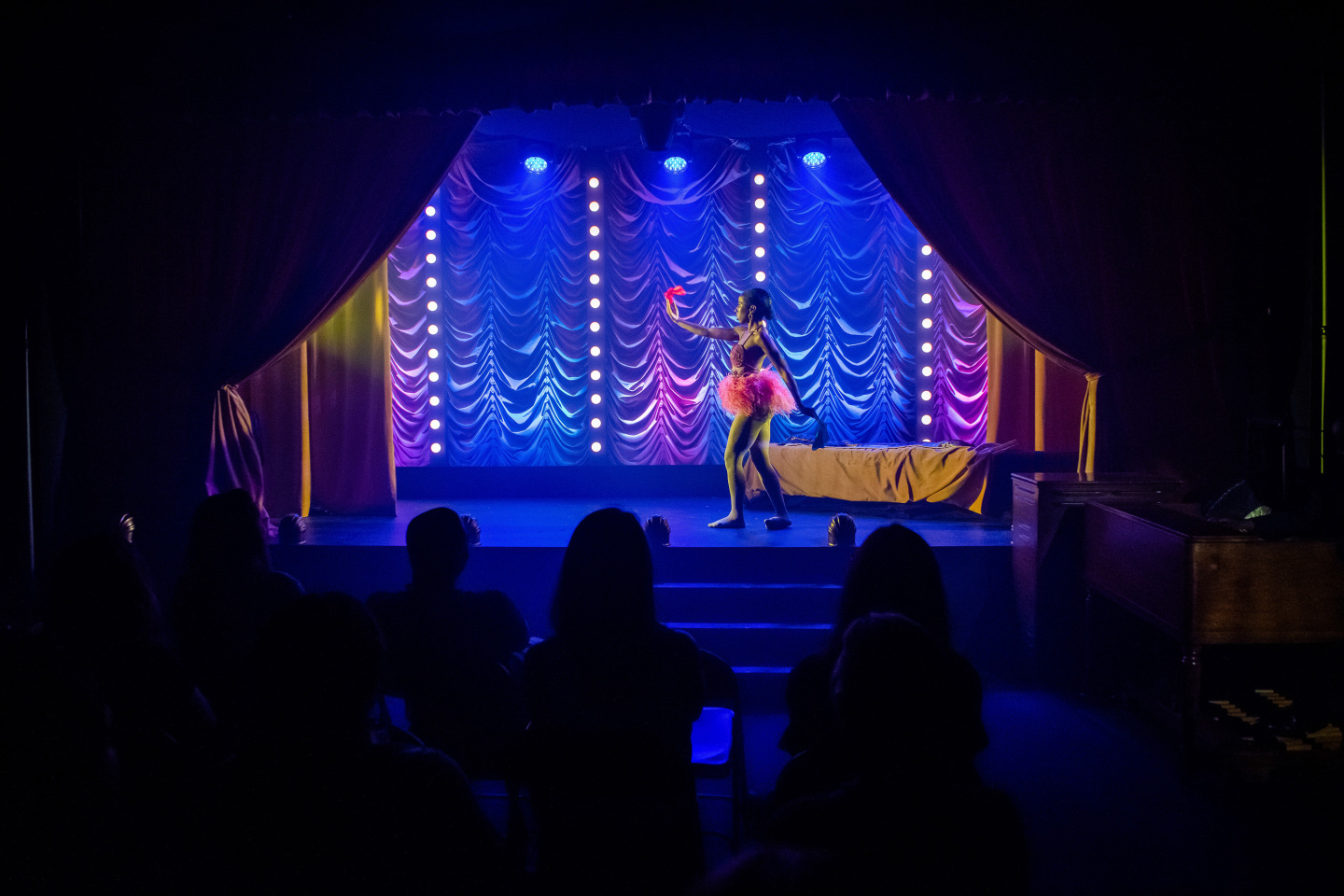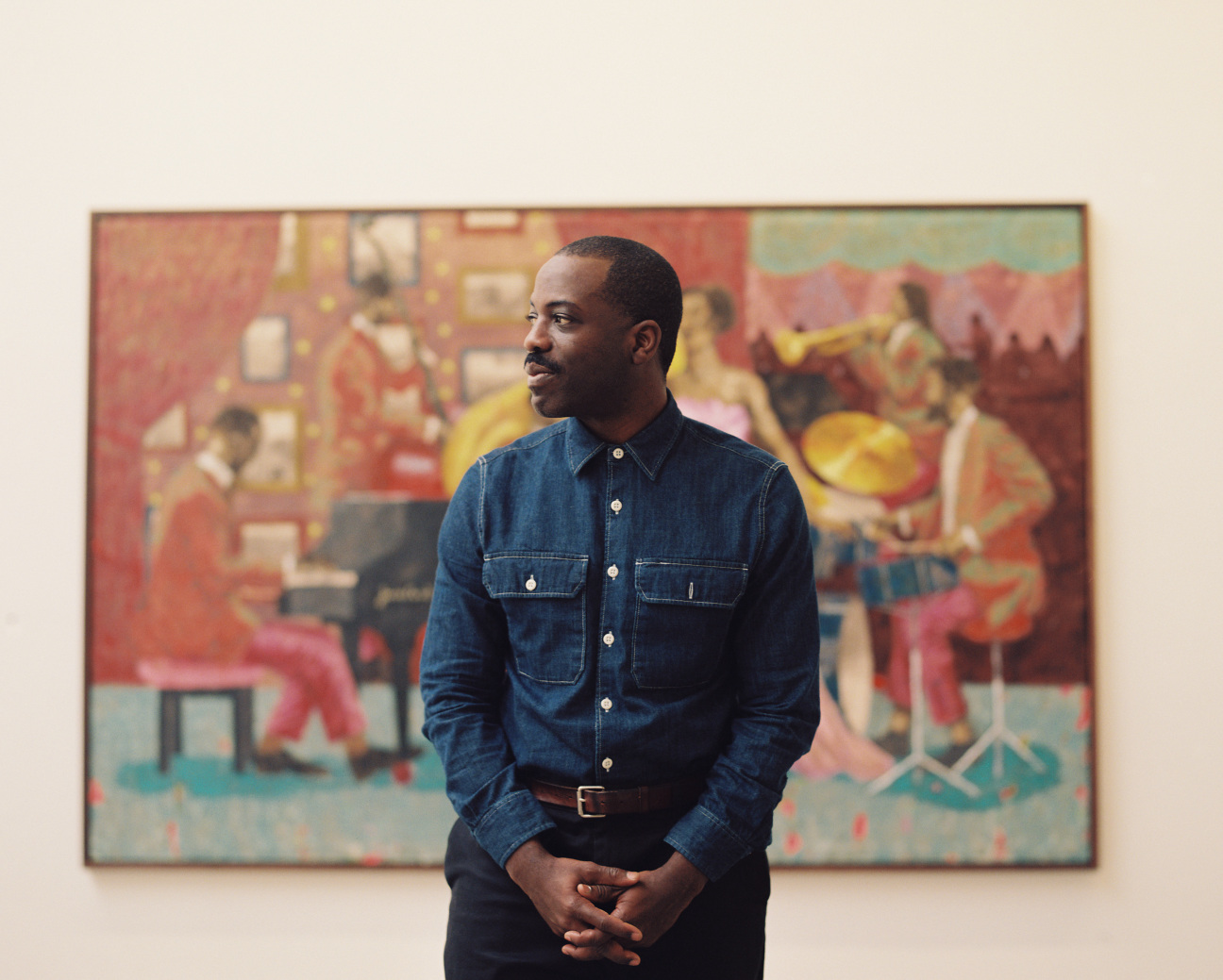You can’t see Derek Fordjour’s show at David Kordansky Gallery in Los Angeles without a token—at least, not without passing through a curving, chandeliered entryway, wallpapered with recent editions of the Financial Times (Ukraine, Putin, grain and gas in the headlines) staffed by a twentieth-century showgirl, who will press a token into your hand. What awaits behind the turnstile and curtain, though, is not the blockbuster movie magic native to Hollywood; more like the timeless magic of vaudeville and carnival. But that’s not quite it, either—Fordjour’s show crackles with something like the astounding, prosaic illusionism of Henry “Box” Brown, a former slave who shipped himself to freedom via the Postal Service.
“Box” Brown features in Fordjour’s Cargo, one of a series of new paintings that pay tribute to historic Black magicians of all stripes. Many made their careers not without certain professional sleight of hand. Fordjour nods to the proclivity of Black performers for wearing turbans in the South, for instance, to pass as Middle Eastern, as Goldfinger does in the painting Float, depicted pulling a hoop around the levitating body of his wife Dove. In Birdman, a portrait of famous magician and tightrope artist Richard Potter, the figure is flocked by songbirds on the wire.




The figures thus honored are a bit like Fordjour himself, performing maniac feats with materials. He makes paintings with a signature way of layering painted cardboard, aluminum foil and the pale pink newsprint of the Financial Times. This last layer is the “skin” of rationality, racial pun intended, a newspaper for financiers—“traders,” no less, although slaves aren’t indexed there—pointedly painted beyond recognition. Fordjour sometimes tears through the surface into bright pockets of pigment beneath, the raw color beaming through like light. Past series have explored other aspects of the Black experience—churchgoing, for example, including gospel choirs and hardwood benches but also public funerals of the likes of George Floyd, whose gold-plated coffin Fordjour depicted in 2020.
The work in “Magic, Mystery & Legerdemain” continues that blend of virtuosity, meanness, ambition, and worldliness; heaven and earth, sky and street. In other words, the show surveys the outsized role of Black Americans in popular entertainment. The showgirl handing out tokens in the vestibule is echoed a dozen times by the women dressing backstage in Homage, which Fordjour says reframes the trope that Black women are magical. Another fanciful history painting, Jazzland, stages the evolution of what many consider the only sui generis American art form, composed by former slaves on the masters’ instruments. Instead of recapping this pat narrative, Fordjour’s painting poses it as a question.
Then there’s Birth of Showtime, a portrait of L.A. Laker Magic Johnson. Raised in the citrusless Midwest and newly arrived in the Southland, the star guard reaches in awe for a ripe orange on the bough, holding it airborne, palming it like a tiny basketball. For Fordjour, the moment is an allegory of when sport became spectacle. Johnson was the first of many Black basketball stars promoted as a rival to the white Larry Bird. Fordjour renders the ornament and grill of the waiting Rolls-Royce in sparkling tin foil against posterboard-orange shadows.

Fordjour also understands the bittersweet wages of fame. A small bust of a Tuskegee Airman in a leather helmet, one of the Black pilots in the famous squadron fighting for the United States in World War II, resembles a football player of the era. The Kordansky show features three sculptures that amalgamate casts of the bust, stacked into a sort of trophy and plated in copper, nickel or gold like a budget parody of the winners’ podium. Their titles, respectively, dole out bitter advice: Futile Ambition; Never go alone; Don’t bite the hand. These sculptures are on view alongside others that sever and recombine the codes of Black athletic prowess—stacks of three balls balanced on disembodied knees, larger coal-black portrait busts burdened with vintage medals. They’re in a long, narrow side gallery, around the corner from the main space, facing a 35-foot-long painting of a Carnival procession through Salvador, Brazil. In other words, the juxtaposition of one more or less exploitative form of Black performance with a more spiritualized suspension of disbelief, the long train of the African diaspora reveling on its own terms. To get here, though, visitors pass through a final bit of theatricality: the white cube transmuted into a wood-paneled church basement, then decked out into a vaudeville theater, complete with rippling velvet curtains and the soft, final clinking of admission tokens—a stage upon which would play the abridged history of Black spectacle in the United States. Once a day during gallery hours, L.A.-based magician Kenrick ICE McDonald performs as Benjamin Rucker, aka Black Herman, a former assistant and student to a lineage of European illusionists who, along with their tricks, adopted their family name.










 in your life?
in your life?

